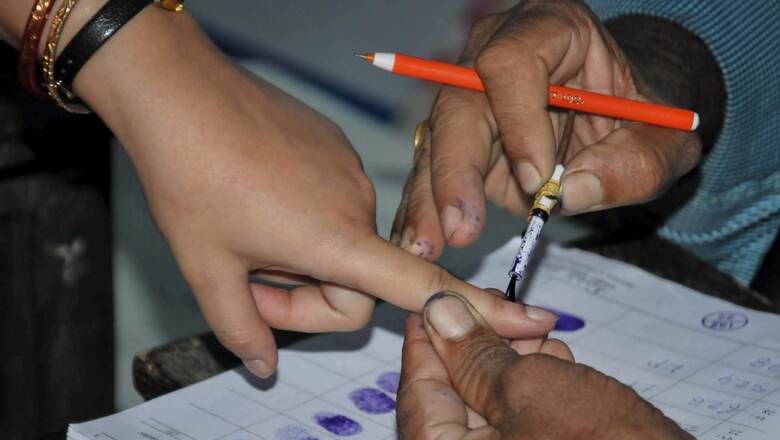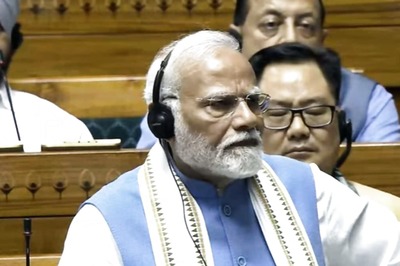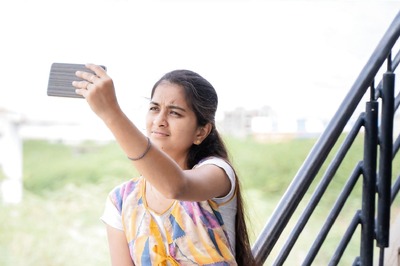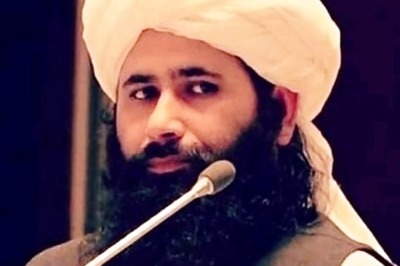
views
‘One Nation, One Election’ is an idea whose time has come. In fact, the former President of India, Ram Nath Kovind, in his address to Parliament in January 2018, mentioned this as one of the critically needed reforms. He said that citizens are concerned about frequent elections in one part of the country or another, which adversely impacts the economy and process of development. Prime Minister Narendra Modi has spoken emphatically about the desirability of having one election across the country. Therefore, the idea is not a bolt from the blue. The central idea is to synchronise the timing of Lok Sabha and State Assembly elections across all states to reduce the frequency of polls throughout the country.
The idea of ‘One Nation, One Election’ made its debut in the first annual report of the Election Commission in 1983. It had supported holding simultaneous elections to reduce expenditure, for effective use of manpower and human resource and also because frequent elections affected the day-to-day functioning of the government, both at the state level and the Centre, creating hardship for common people.
The topic was revived by the 170th Report of the Law Commission, submitted in 1999. The Report underlined the desirability of holding elections to the Lok Sabha and state assemblies once in five years, but admitted that it could not be achieved overnight in the prevailing circumstances. The proposal, however, gained momentum with the manifesto of the BJP for the 2014 Lok Sabha election, which stated that the party would seek to evolve a method of holding elections to assemblies and the Lok Sabha simultaneously.
The 79th Report of the Department Related Parliamentary Standing Committee on Personnel, Public Grievances, Law and Justice, submitted in 2015, was devoted to studying the feasibility of holding these simultaneous elections. It recommended an alternative and practicable method of holding simultaneous elections, which involved holding them in two phases twice in every five-year cycle. NITI Aayog issued a Working Paper on the subject in 2017 titled, “Analysis of Simultaneous Elections: The What, Why and How”. It broadly recommended a gradual move to synchronisation of elections between Parliament and state assemblies between 2019 and 2024.
This was followed by a draft report of the Law Commission in 2018, which also recommended holding of simultaneous elections, with some exceptions. The Commission noted that for holding simultaneous elections, amendments to the Constitution, the Representation of the People Act, 1951 and the Rules of Procedure of the Lok Sabha and state assemblies would be required. Such an exercise would save public money, reduce the burden on the administrative set-up and security forces and lead to concentration on development activities rather than election duties, the Commission said.
Prime Minister Modi, addressing the All India Presiding Officers Conference via video conference, on November 26, 2020, raised the pitch for ‘One Nation, One Election’ (ONOE) and a single voter list for all polls, in order to prevent the impact of the model code of conduct (MCC) on development works every few months, due to frequent spread-out polls. ‘One Nation, One Election’ isn’t just an issue of deliberation but also the need of the country.
On one voter list, the PM observed, “Only one voter list should be used for Lok Sabha, Vidhan Sabha and other elections. Why are we wasting time and money?” Emphasising the need for coordination between all three wings of the state, the legislature, executive and the judiciary, PM Modi stated that everything, from their role to their decorum, was described in the Constitution itself. “In the 1970s, we saw how there was an attempt to breach the dignity of separation of power, but the country got the answer only from the Constitution. After that period of Emergency, the system of checks and balances became stronger and stronger. The legislature, the executive and the judiciary, all three, learned a lot from that period and moved forward,” said PM Modi at the conference.
ONOE was, in fact, the practice till 1967, but it was disrupted due to various reasons such as defections, dismissals, and dissolutions of government. Subsequently, due to defections and counter-defections between parties, several legislative assemblies dissolved post-1960, which eventually led to separate polls for Lok Sabha and State assemblies. This synchronised cycle was first broken in Kerala, in July 1959, when the Centre invoked Article 356 of the Constitution to dismiss the ministry headed by EMS Namboodiripad of the Communist Party, which had assumed power after elections in April 1957. This was followed by State elections in February 1960.
One Nation One Election (ONOE) enables the government to concentrate on governance even better. Today, there is some election or the other in some part of the country, at least every three months. The entire attention of the country becomes focused on these elections. There is a virtual paralysis of administration at various levels in varying degrees. ONOE, on the other hand, will lead to continuity in policy decisions. Even when no fresh policy decision is necessary, implementation of ongoing projects gets derailed during election periods as the political executive as well as government officials would be engaged with election duties.
One of the main reasons for political corruption, it is said, are frequent elections. An enormous amount of money has to be raised at every election. Election expenses of political parties can be reduced drastically if elections are held simultaneously. There would be no duplication of fundraising. This would save the public and business community from a lot of pressure for election donations, multiple times. Furthermore, the expenses incurred by the EC can be reduced if elections are held simultaneously. Of course, the EC would have to invest a considerable amount of money initially to put in place the necessary infrastructure.
Moreover, the same electoral rolls can be used for all the elections. This will save a tremendous amount of time and money spent in updating electoral rolls. It will also make it easier for the citizens as they would not have to worry about their names missing from electoral rolls once they are enlisted. A large number of police personnel and paramilitary forces are engaged to ensure that elections are conducted peacefully. This involves massive redeployment, involving huge costs. It also diverts key law enforcement personnel from their critical functions.
Such deployment can be curtailed with simultaneous elections. Holding simultaneous elections could potentially reduce horse trading by elected representatives, which remains a concern even with anti-defection laws in place. Frequent elections lead to many State governments taking policy decisions, only with an aim to woo the electorate at every election. Even though this cannot be stopped fully, the frequency with which governments have to announce freebies, will come down. Frequent elections have led to a situation where many State governments are broke. With a smaller number of elections, their finances could be in better shape.
Article 83(2) and 172 of the Constitution stipulate that the tenure of Lok Sabha and State Assemblies respectively will last for five years unless dissolved earlier and there can be circumstances, as in Article 356, wherein assemblies can be dissolved earlier. Therefore, critics of the ONOE plan ask: What would happen if the Central or any state government collapses mid-tenure? Would elections be held again in every state or will the President’s rule be imposed? Again, what about the logistical challenges in terms of availability and security of electronic voting machines (EVMs), personnel and other resources? EC may face difficulties in managing such a massive exercise, it is alleged. The present form of recurrent elections can be seen as beneficial in a democracy as it allows voters to have their voices heard more frequently, say some experts. As the underlying issues of national and State polls are different, the present framework prevents the blending of issues, ensuring greater accountability, allege a few others who are against ONOE.A 2015 study by the IDFC Institute found “a 77% chance that the winning political party or alliance will win both the Lok Sabha and Assembly elections in that State when held simultaneously”, undermining the distinctive demand and needs of each state, say those who do not support ONOE. Well, all these criticisms are lame and the advantages of ONOE far outweigh any potential negatives, if any.
While ‘One Nation, One Election’ will result in huge savings in expenditure, it cannot be achieved without dramatic changes to our Constitution. India has adopted a quasi-federal set-up and is neither unitary like Britain nor fully federal like the US. Members are elected for the Lok Sabha and the Legislative Assembly. Impartiality of the election process requires strict vigil on the part of the Election Commission (EC). PM Modi has repeatedly asked the presiding officers of elected bodies to ponder over the idea of having one election and one voters’ list, to do away with the “Aaya Ram” and “Gaya Ram” style of politics.
The anti-defection law is special to India. It has, however, not been foolproof. Splits and mergers in political parties over the years, gave room for conflict between the Speaker’s jurisdiction and the court’s role. The prime cause for the instability of elected governments in India in the last few decades must be traced to the decision of the Congress party which misused power that it enjoyed at the Centre, to dismiss State governments run by opposition parties and declare President’s rule on flimsy grounds.
At one stage, nine State governments were dissolved at one stroke under Article 356 of the Constitution, by the erstwhile Congress regime. The practice would have continued unabated but for the Supreme Court ruling in the SR Bommai case. Ours is a quasi-federal structure. In England, the king reigns but does not govern. In the US, the President, both reigns and governs. The Indian President neither governs nor reigns, though he is constitutionally a very important figure and not a mere figurehead, as most would like to believe.
In the US, the State Governor, like the President, is elected directly. We chose to emulate the British cabinet system, restrained by the spirit of collective responsibility. Morality is sacrificed at the altar of expediency, due to frequent elections. The Charan Singh government, decades back, was overthrown within just four months. Russian President Vladimir Putin altered the law to enable himself to be the President of Russia till 2036. China, a while back, went through the one candidate election, in an election that had no candidate other than Xi Jinping, making a mockery out of what was anyways, a farce, to start with. Xi won the elections with 99.86 per cent of the votes.
India, in sharp contrast, stands out as a country with full allegiance to democratic conventions and ‘One Nation, One Election’, will further strengthen democratic institutions and our socio-economic fabric. This theme has been an abiding one for Prime Minister Modi. While critics say it is against the principle of cooperative federalism, such criticism is unfounded. An option often suggested by some constitutional experts is that if it is not possible to conduct simultaneous elections, then at least all elections falling in one calendar year should be conducted together.
Historically, elections during the first two decades after Independence for the House of the People and state legislative assemblies were held simultaneously, i.e., during 1951-52, 1957, 1962 and 1967. Dissolution of certain assemblies in 1968 and 1969, followed by the dissolution of the House of the People in 1970 and subsequent general elections in 1971, disturbed the cycle of simultaneous elections. Indiscriminate use of Article 356 (President’s Rule) of the Constitution, by the Nehru-Gandhi establishment, also disrupted the schedule of simultaneous elections.
Various studies of the international scenario found that a system to ensure simultaneous election does exist in certain countries. In Germany, Bundestag (i.e. the Lower House) cannot simply remove the Chancellor with a vote of no-confidence, as the opponents must not only disagree with the governance but also agree on a replacement, by way of a “constructive vote of no-confidence”. In some countries including India, in the event of a hung House/assembly, it is mandated that all efforts must be made by the president/governor, as the case may be, to install a government that will enjoy the support of the House/assembly. This would give an opportunity to the largest party, along with its pre-poll or post-poll alliance(s). If, however, mid-term poll becomes inevitable, the duration of the House/assembly so constituted should be only for the remainder of the term.
In the UK, the Parliament of Westminster introduced a fixed term by enacting the Fixed-term Parliaments Act, 2011, which provides a term of five years for general elections. The Act of 2011 specifies that early elections can be held only if a motion for it is agreed either by at least two-thirds of the whole House or without division, or if a motion of no-confidence is passed and no alternative government is confirmed by the Commons, within 14 days thereof.
The biggest argument in favour of holding simultaneous elections is therefore the fact that, governments do not have to be in election mode all the time, thereby making governance and policy-making, more seamless. The Model Code of Conduct (MCC) prevents governments from announcing new schemes and making appointments. Deputing government employees frequently on election duty hinders public services, including school education, as well as maintenance of law and order and national security.
Simultaneous elections will, therefore, reduce time and cost involved in the conduct of elections and will curb corruption and illicit financing of elections. Those who allege that ‘One Nation, One Election’, will be the harbinger of a unitary state, are clearly, misguided. Again, there are concerns that simultaneous elections will impact the behaviour of voters, as national and local issues may get mixed up and distort priorities, giving unfair advantage to national parties, at the expense of regional parties.
Such concerns are, however, overdone, with no logical basis. Voters, today, are very aware of both local and national issues and to assume that they will get confused if elections are held simultaneously, is an insult to the intelligence of the electorate. True, it may be a tad difficult to find a suitable time slot, given the geographical and administrative diversity relating to weather, agricultural cycle, exam schedule, religious festivals and public holidays, in a country as vast as India. However, the positives of simultaneous elections far outweigh any perceived negatives. The sheer logistics involved in holding simultaneous elections, in terms of requisitioning and movement of men, women and material, may make the exercise a mammoth one, but it is manageable.
Also, accusations that simultaneous elections may result in misuse of Article 356 or early dissolution of the Lok Sabha or any of the state assemblies, are simply a figment of imagination of those who do not want ONOE. True, a large number of amendments to laws, rules and regulations would need to be carried out, making the task very arduous, but it is certainly worth the trouble. Amendments to the Constitution would encompass Articles 83 (Duration of Houses), 85 (Dissolution of the Lok Sabha), 172 (Duration of state legislatures), 174 (Dissolution of state legislatures), 356 (Failure of constitutional machinery) and the Tenth Schedule (to ensure that all disqualification issues arising from defection are decided by the presiding officer within six months). Ratification of the amendments by not less than one-half of the State legislatures may also be required to be taken as a matter of abundant precaution.
Amendments to laws would inter alia require changes in the Representation of the People Act, 1951, such as Section 2 (adding a definition of “simultaneous elections”), and Sections 14 and 15 (Notification of general and assembly elections). The Rules of Procedure and Conduct of Business of the Lok Sabha and assemblies would need to be amended to replace “Motion of No-Confidence” with “Motion of Constructive Vote of No-Confidence”.
In the final analysis, meeting of minds may be a good beginning in the pursuit of the goal of “One Nation, One Election”. But to take the idea to fruition, will require not only the meeting of minds and a political consensus, but also a resolute determination to act, in the larger national interest. And certainly, courage of conviction, the ability to visualise and the will to execute and successfully implement, even the most seemingly difficult initiatives, is something that Prime Minister Modi has in abundance. Be it ‘One Nation, One Tax’, ‘One Nation, One Mobility Card’, or for that matter, ‘One Nation, One Ombudsman’ or even ‘One Nation, One Ration Card’, the Modi government has repeatedly showcased its ability to think big and then ensure that those big ideas are effectively implemented, on the ground.
Larry J Sabato famously said, “An election is always determined by the people who show up”. Clearly, for the democratic process to retain its sanctity and not suffer from any fatigue, it is important to see those eligible for voting participate in large numbers. That, in turn, makes it essential to make elections into an exercise that is not too frequent. ‘One Nation, One Election’ is clearly, therefore, an idea whose time has come.
The first official meeting of the One Nation, One Election (ONOE) committee, which was formed to examine the idea, is reportedly set to take place on September 23, 2023. The panel, among others, has Union Home Minister Amit Shah and MoS Arjun Meghwal as its members. Congress MP Adhir Ranjan Chowdhury, had declined to be a part of the exercise. In a letter to Shah, Chowdhury said he cannot be a part of the committee, the “terms of reference” of which “have been prepared in a manner to guarantee its conclusions”. He called the exercise “an eyewash”.
Obviously, Chowdhury declined to be a part of the panel at the bidding of his political master. Be that as it may, if ONOE has to be implemented, it can only be done by a leader of the stature of PM Modi who has both the foresight and the courage of conviction to see it through.
Sanju Verma is an economist, a national spokesperson of the BJP and the bestselling author of ‘The Modi Gambit’. Views expressed in the above piece are personal and solely that of the author. They do not necessarily reflect News18’s views.




















Comments
0 comment